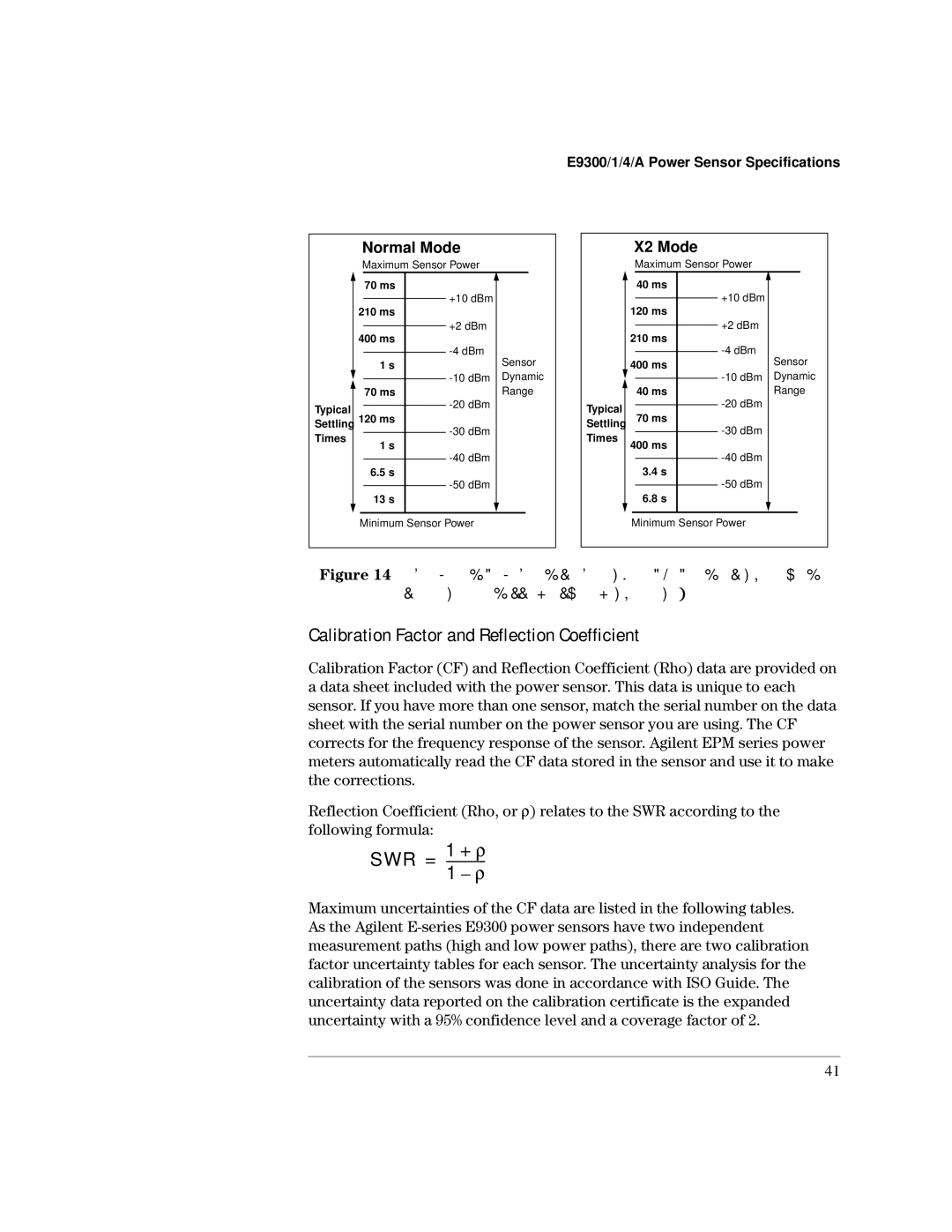
E9300/1/4/A Power Sensor Specifications
Normal Mode
Maximum Sensor Power
X2 Mode
Maximum Sensor Power
Typical
Settling
Times
70ms
210ms
400ms
1s
70ms
120ms
1s
6.5s
13s
+10 dBm
+2 dBm
Sensor
Dynamic
Range
Typical
Settling
Times
40ms
120ms
210ms
400ms
40ms
70ms
400ms
3.4s
6.8s
+10 dBm
+2 dBm
Sensor
Dynamic
Range
Minimum Sensor Power
Minimum Sensor Power
Figure 14 Autofilter, default resolution, 10 dB decreasing power step (not across the switching point)
Calibration Factor and Reflection Coefficient
Calibration Factor (CF) and Reflection Coefficient (Rho) data are provided on a data sheet included with the power sensor. This data is unique to each sensor. If you have more than one sensor, match the serial number on the data sheet with the serial number on the power sensor you are using. The CF corrects for the frequency response of the sensor. Agilent EPM series power meters automatically read the CF data stored in the sensor and use it to make the corrections.
Reflection Coefficient (Rho, or ρ ) relates to the SWR according to the following formula:
1 + ρ SWR = ------------
1 – ρ
Maximum uncertainties of the CF data are listed in the following tables. As the Agilent
41
